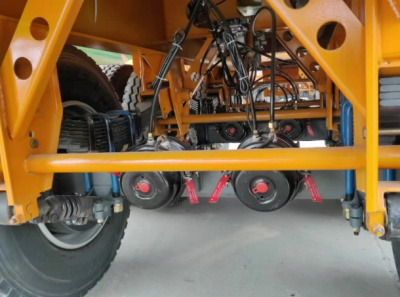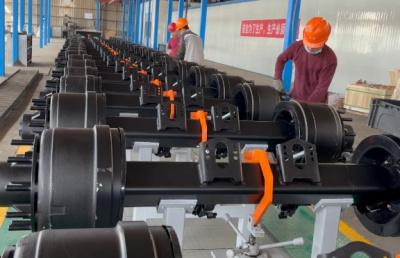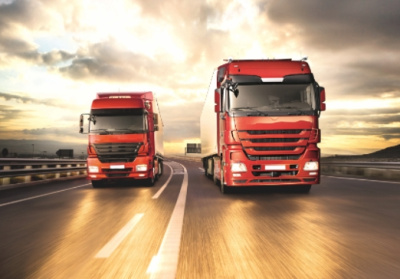When did the freight industry involve?
For the coal transportation industry, mother and child vehicles are no strangers, especially in long-distance coal transportation, mother and child vehicles are more common, and even existed widely in the early years.
The so-called mother car refers to the big car pulling the small car to run. For example, two cars are used for one-way transportation. When the empty car returns, one car will carry the other car. Such a "car on the back" can save part of the high-speed fee and fuel cost. In the fierce competition environment, it has played a certain role in reducing costs and increasing efficiency trailer axle.
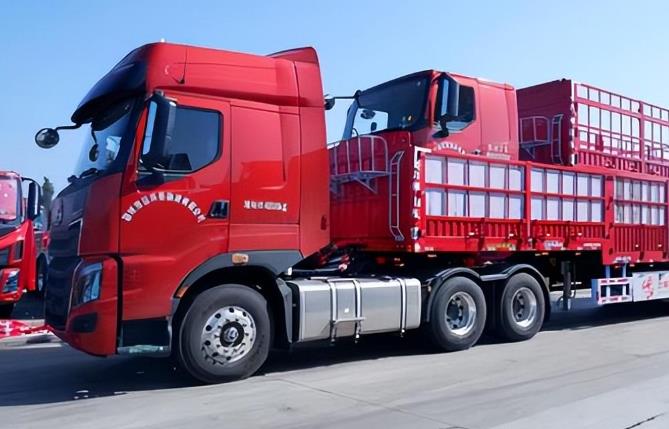
In order to meet the market demand, many car companies have also made many updates to the parent car, not only improving the tops and sizes of the two cars, but also upgrading the cab of the parent car to a high-roof double-bed, providing sufficient rest space for the driver of the sub-car; at the same time, designing the cab of the sub-car to be flat-roofed, which is convenient for getting on and off the car, and is as lightweight as possible to further reduce fuel consumption and cope with height-limited road sections during transportation.
Although it sounds reasonable, strictly speaking, the mother and child car is actually a product that takes advantage of loopholes in laws and regulations. According to the requirements of the regulations, special flatbed vehicles must be used for transporting auxiliary vehicles. Obviously, most of the sub-cars on the market do not meet this requirement.
I thought that the mother-and-child car was the limit of the freight industry, but I never expected that the market’s maximization of transportation benefits did not stop there. There was an upgraded version of the mother-and-child car—the grandson car, and some car owners called it the "three-generation car for grandparents and grandchildren", which means that one car is carrying two empty cars on the road at the same time.
The picture below is a grandfather and grandson car being unloaded. Due to the model and shooting angle, it is impossible to display the whole car in the same screenshot. This is a collage of three pictures. From the picture, we can also see the loading and unloading methods of grandparents and grandchildren. One gets on and off from the rear of the main car cab and the front of the compartment, and the other gets on and off from the rear of the main car compartment trailer axle.
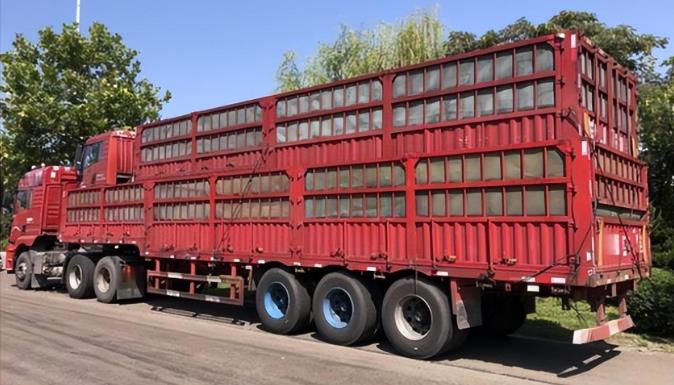
While marveling at the loading method of grandpa and grandchildren, we also have to marvel at the thoughtful thinking of the designer. According to a promotional material of a grandson car on the Internet, the main car is 13.75m long. The top is made of corrugated blocks at the bottom and the fence with hooks at the top. The height is 1m. It is very convenient to transport coal after being tied with a tarpaulin. Slots and ladders; such a main car can carry two 9.5m models on the road at the same time. If there are three cars returning empty, this way of "one carrying two" can indeed save part of the fuel consumption and tolls, which sounds very attractive.
However, is such a model really worth advocating? Does the freight market really need such a variety of introversion?
First of all, whether it is a mother car or a grandparent car, driving on the road is extremely dangerous, because the child car itself is an independent large-scale cargo, the contact area with the main car is very limited, and the friction force is not enough. If it is not fixed well, once inertial displacement occurs on the way, it is easy to cause major traffic accidents, which is very harmful to the driver and other traffic participants. Although the purpose of running transportation is to make money, it must be obtained in a proper way. If the safety of life cannot be guaranteed, what is the use of earning more money?
Secondly, it disrupts the market, causing freight rates to drop again and again, thus falling into a vicious circle, which is not conducive to the long-term development of the freight market. No matter whether it is a family car or a grandchild car, they are all products of the sluggish market. In the environment of fierce competition and difficult survival, people have to find ways to reduce costs and increase efficiency. The toll and fuel costs are saved, and the transportation cost is reduced. The usual freight fee is 10,000 yuan, and these models can run for a few thousand yuan. How can ordinary models win orders? Had to take the initiative to reduce the freight. If things go on like this, the shipping cost, which was originally not high, will drop by a large margin. If there are many such models on the market, will the owner of the goods still offer high freight charges? Almost impossible.
Third, non-compliance. As we mentioned above, strictly speaking, the mother-child car is originally a model that exploits loopholes. The "car on the back" method is easy to exceed the height and limit.
Then some car owners may say: Then I can buy a parent-child car or grandparent car with the right size, right? Not super high, not too long, not overweight, is it compliant? It's not that simple.

According to the provisions of GB7258-2017:
The cargo compartment (container) should be installed firmly and reliably, and there should be no structure or device for heightening, lengthening or widening the cargo compartment (container) in design and manufacture trailer axle.
The cargo-carrying part of the warehouse grid-type cargo vehicle shall adopt a cage-type or fence-type structure. The top of the cargo area shall be equipped with ceiling bars fixed to the side rails and cannot be disassembled and adjusted; the longitudinal distance between the roof bars shall be less than or equal to 500 mm.
For the convenience of sub-cars getting on and off, many main cars have pull-out tailgate pillars, or foldable and detachable grille tops. The above two items alone may block a large number of parent cars or grandparents from the regulations.

In addition, everyone needs to be clear that there are currently no regulations that clearly stipulate that children's cars or grandchildren's cars can be driven on the road. Once the traffic control department starts to deal with it, it may cause illegal models to lie down collectively.
Fourth, vehicle insurance does not bear it. Insurance companies have many rules and regulations, which everyone knows. Even if there is a problem with the vehicle or goods under compliant transportation, it is not a particularly easy task to take out insurance, let alone under the conditions of illegal transportation. In the industry forums, some car owners have made it clear that if there is a problem in the transportation of a parent car or a grandchild car, the insurance of the child car will not pay for it, so car owners should think twice before proceeding.
What do you think of these models? Welcome to leave a message in the comment area.




